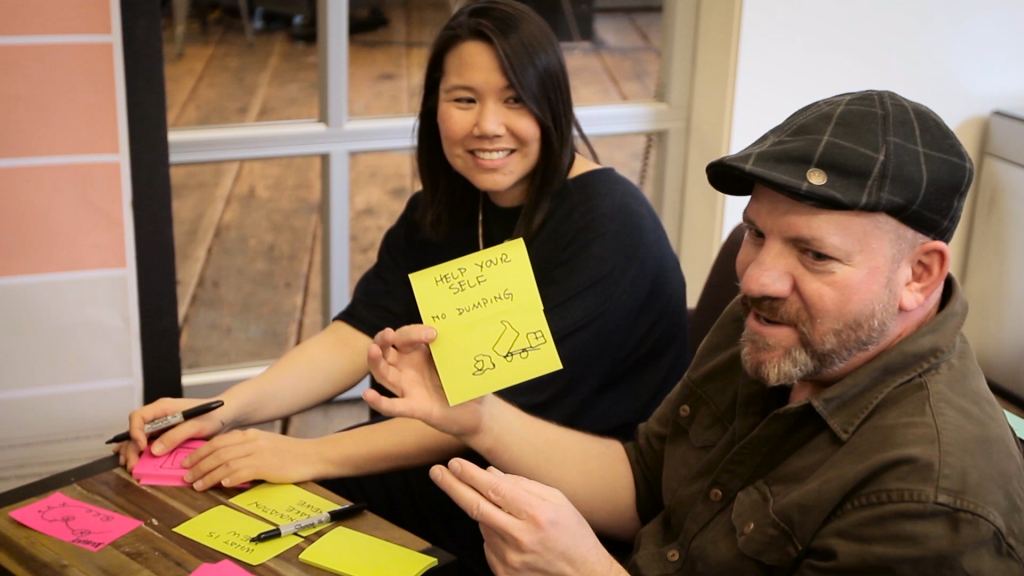 Sometimes, the first step toward a great answer is to reframe the question. Problem statements often assume that you already know what to look for, that you know the correct solution and that the only challenge lies in figuring out how to achieve it. Before you start searching for solutions, however, step back to make sure you’ve unearthed the correct question.
Sometimes, the first step toward a great answer is to reframe the question. Problem statements often assume that you already know what to look for, that you know the correct solution and that the only challenge lies in figuring out how to achieve it. Before you start searching for solutions, however, step back to make sure you’ve unearthed the correct question.
A great example of the power of asking the right question is the story of the Polaroid Instant Camera from Warren Berger’s book A More Beautiful Question. The four-year-old daughter of the founder of Polaroid asked, “Why do we have to wait for the picture?” According to Berger, it’s no coincidence that a four-year-old girl asked an amazing question, age four or five is a questioning peak period for humans. Kids tend to be good at asking questions because they don’t have a lot of assumptions and they look at things with a beginner’s mind. The rest of us tend to assume. Great questions can almost be obvious but you need to see things with a fresh eye in order to see the question and then ask it.
Without getting at deeper questions, we can’t hope to solve the deeper problems. Even when you’re in a hurry for the answer, reframing the question can be time well spent. One of the most powerful ways to reframe a problem is to humanize it. Focusing our energy on the right question can make the difference between incremental improvement and breakthrough innovation.

Techniques for Reframing the Question
Here are some ways to reframe your problem. Try them and see if they lead you to a better question to answer, one that addresses a human need and sparks more inspiration:
-
STEP BACK FROM OBVIOUS SOLUTIONS
Instead of trying to invent a better mousetrap, for example, look at other ways to mouseproof your home. Maybe the mousetrap isn’t really the problem. In a recent discussion on creative leadership with IDEO Partner Tom Kelly, Tom emphasized that by reframing, we avoid an overly narrow focus on the problem and open ourselves to the possibility of finding deeper, more meaningful problems to solve.
-
ALTER YOUR FOCUS OR POINT OF VIEW
John F. Kennedy charged Americans to “Ask not what your country can do for you—ask what you can do for your country,” encouraging us to rethink our rights and obligations. Changing your point of view often means shifting focus to a different stakeholder: to a parent instead of a child, or to a car buyer instead of the car dealer. Taking on a mindset of empathy toward your stakeholder is a great way to change your focus.
-
UNCOVER THE REAL ISSUE
Decades ago, Harvard Business School professor Theodore Levitt observed, “People don’t want to buy a quarterinch drill. They want a quarter-inch hole!” If you only asked questions about drills, you might miss out on the possibility of using lasers to create small precise holes like the ones in some laptop speaker grills. Uncover your customer’s true needs and you’ll unlock a rich trove of insights.
-
LOOK FOR WAYS TO BYPASS RESISTANCE OR MENTAL BLOCKS
If you try to get people to stop drinking the impure water from the local well in a developing country, you may find villagers responding, “My mother gave me water from this well; are you saying my mother was wrong?” If you want to break with the past, that kind of question has to be completely reframed. Instead, you can show how impure and dangerous their current well water is in contrast to how safe the purified water is. Then you can ask a completely different question to parents anywhere in the world: “Which water would you want your children to drink?” New question, very different answer.
-
THINK ABOUT THE OPPOSITE
Working with the Community Action Project in Oklahoma, IDEO.org co-leads Jocelyn Wyatt and Patrice Martin were struggling with how to gain more involvement from inner-city parents in programs that would help their kids’ futures. Faced with participation rates of less than 20 percent, they were racking their brains trying to come up with solutions. But when they approached the challenge from the opposite direction and asked, “What are all the reasons we can’t get parents to participate?” (busy lives, transportation, child care, etc.), it got all the issues out on the table and pointed to possible solutions. For example, instead of emphasizing that the programs were free, organizers started communicating how valuable the programs were for parents and their children. Flipping the question around can be a useful tool for getting past preconceptions or routine ways of thinking so that you can see the situation in new ways.
Reframing the question can send you in promising new directions; it not only gives you more successful solutions but also allows you to address bigger, more important problems. Help your team build creative problem-solving skills and mindsets to develop solutions for deeper, more meaningful problems with IDEO U’s design thinking and creative leadership courses.
A portion of this article is an excerpt of the Reframe Challenges section of David and Tom Kelley’s book Creative Confidence.

